How to program dancehall drum patterns
We pull apart the quintessential ragga riddim
A development of reggae in the late '70s, but really coming into its own in the '80s with the advent of affordable electronic instrumentation, dancehall music is a milestone genre on the roadmap of bass music – that would eventually feed directly into jungle – as well as an enduringly popular form in its own right.
The track that’s most widely considered to be the dancehall prototype would be Wayne Smith’s (Under Mi) Sleng Teng (1984). Although the seminal drum machine part in the track could be said to be relatively non-descript, the style would go on to quickly develop its own particular percussive template.
This is based on a dotted-note shape that sounds and feels very different to the 2-and-4 backbeat of most other dance music flavours, and makes less distinction between the positional roles of the kick and snare, often giving the snare the focal emphasis generally reserved for the kick. It’s these two factors - in the drum department, at least - that give dancehall its instantly recognisable character and attitude.
In the tutorial below, we’ll be showing you how to program a whole range of dancehall drum patterns, that go from the decidedly straightforward right down to the (comparatively) intricate.
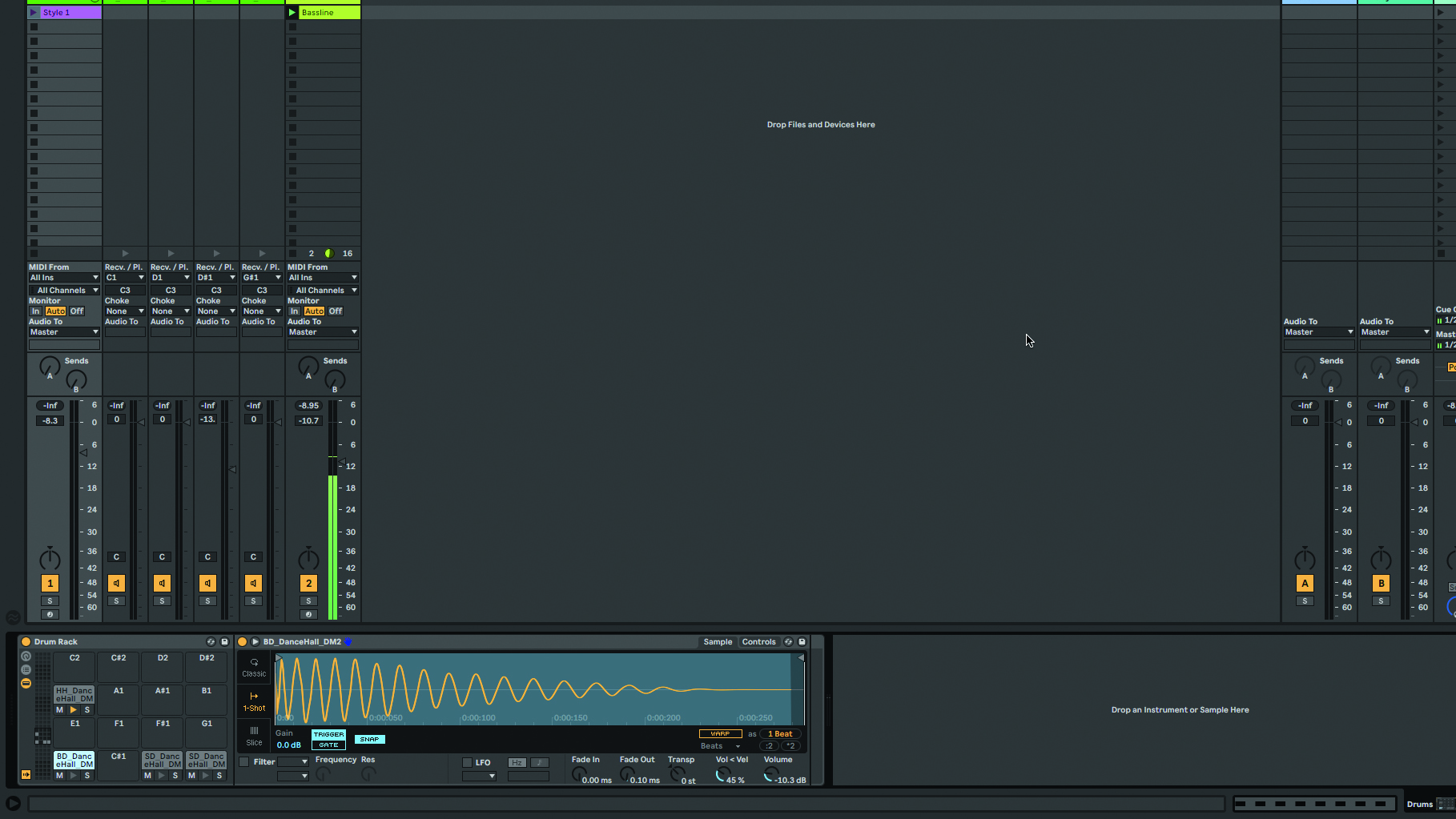
Step 1: Key to the groove of dancehall is its characteristic underpinning dotted rhythm. Essentially, this comprises a repeating pattern of two dotted eighth-notes followed by a regular eighth-note, and you have a lot of freedom in terms of how those notes are distributed between the kick and snare.
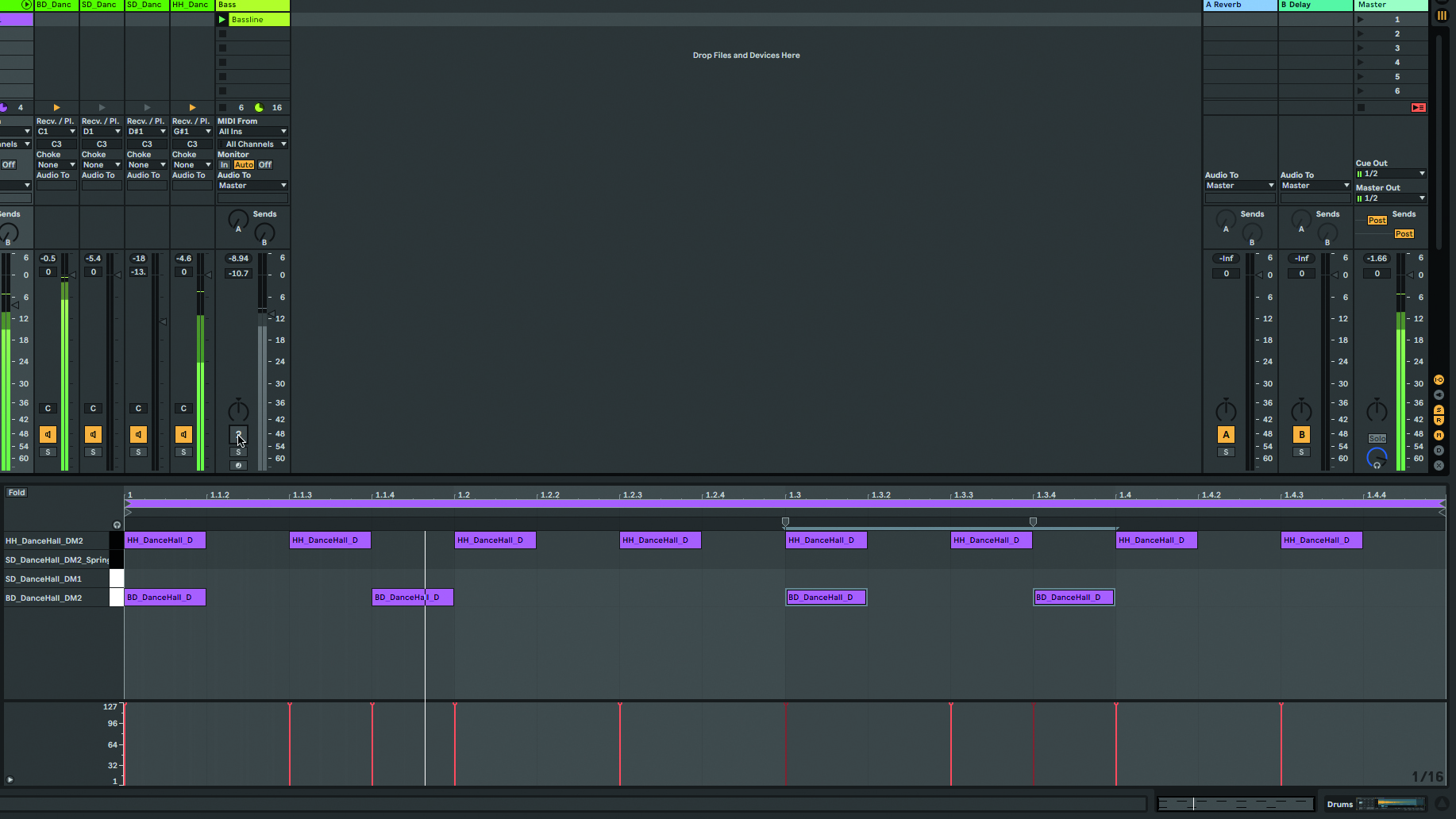
Step 2: Here, we’ve loaded a set of one-shot dancehall drum samples from Ableton Live’s factory library into a Drum Rack, and set the project tempo to 95bpm. With a metronomic eighth-note hi-hat line in place, we start by putting kick drum hits on the first and fourth 16th-notes of beats 1 and 3 of a one-bar loop.
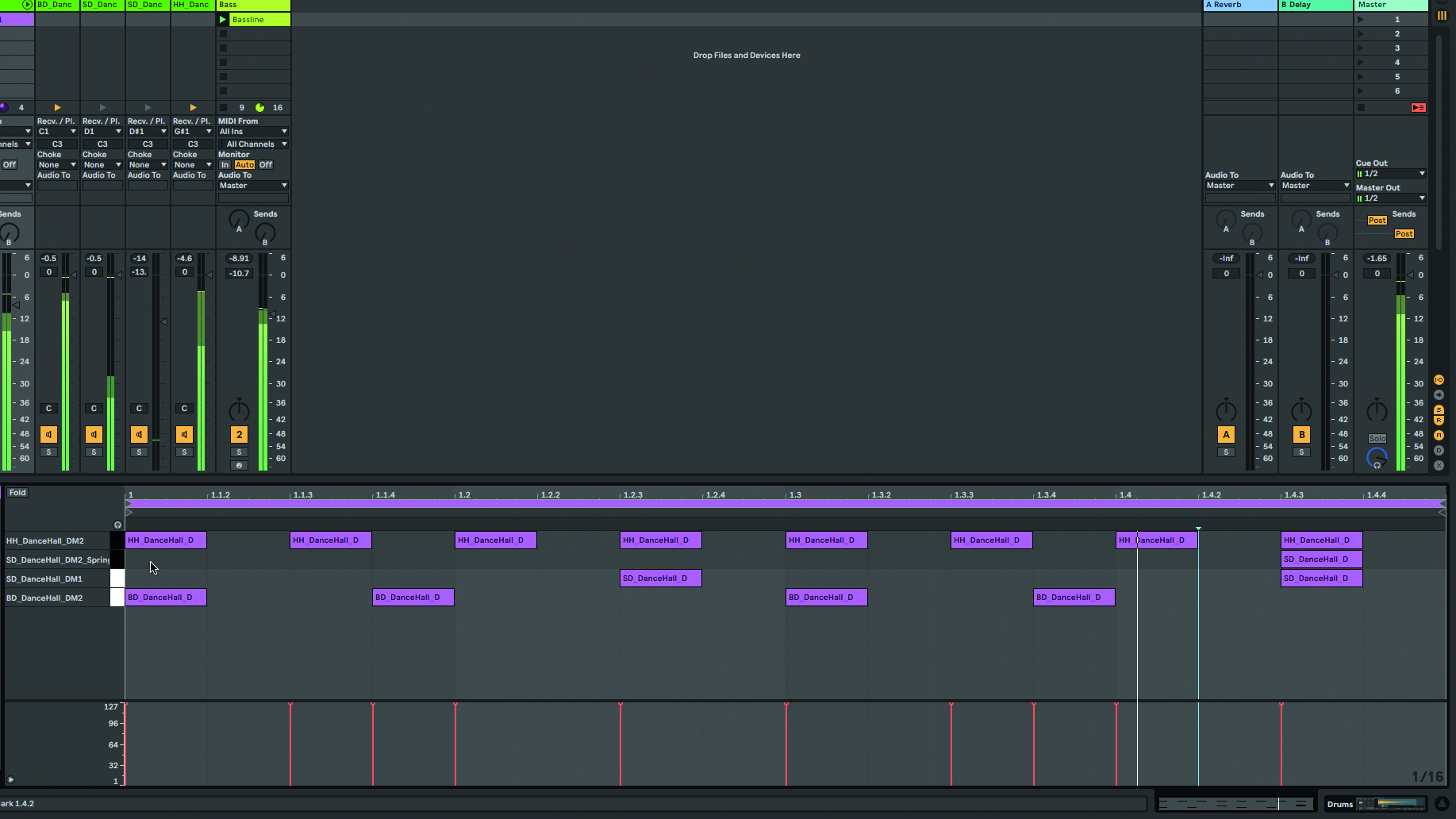
Step 3: Those are the aforementioned dotted eighth-notes, then, and for this particular dancehall permutation, we’ll cover the final eighth in each set of three with a snare. Immediately we have an unmistakable dancehall beat, but this really is about as basic as it gets.
Get the MusicRadar Newsletter
Want all the hottest music and gear news, reviews, deals, features and more, direct to your inbox? Sign up here.
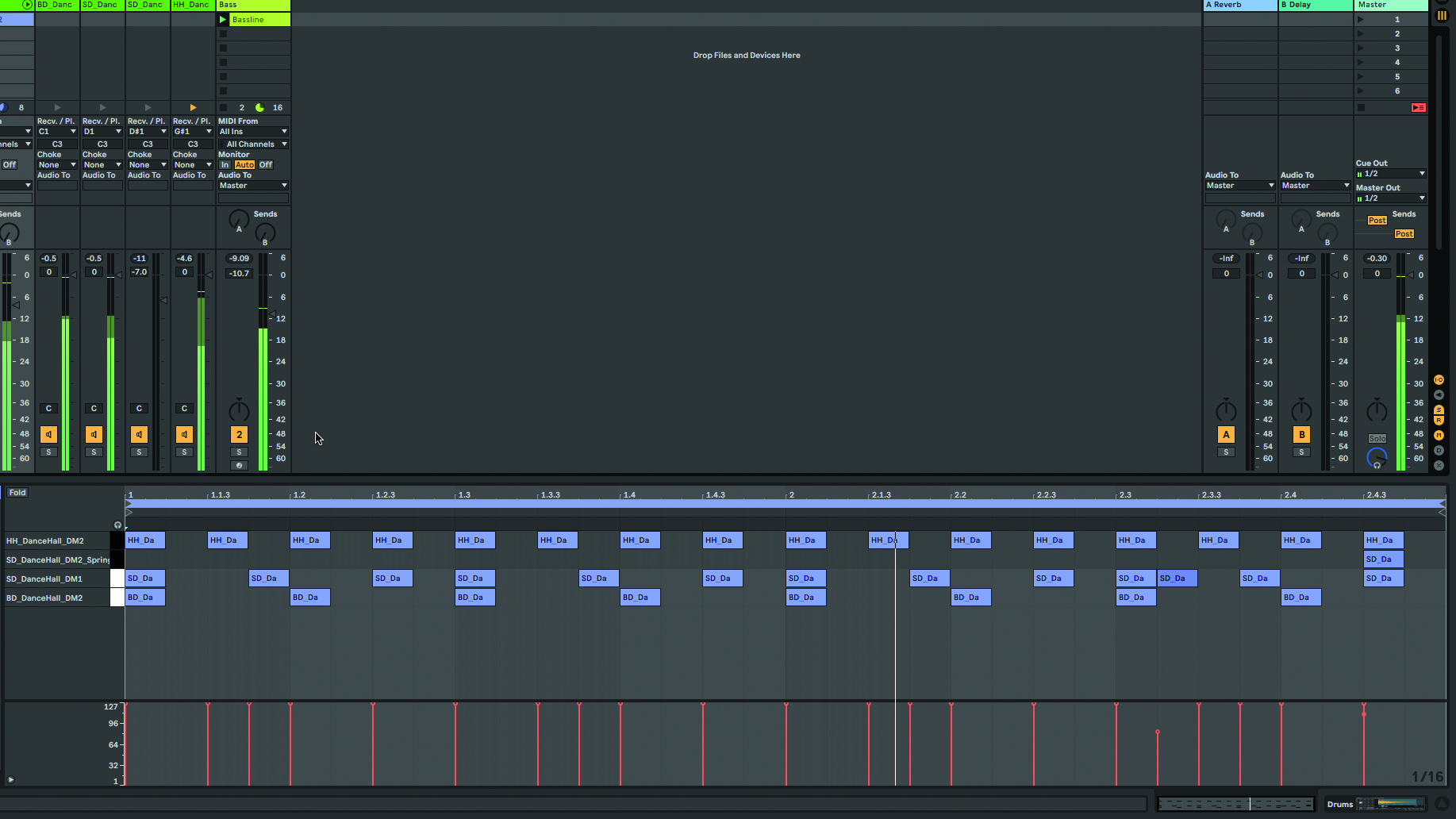
Step 4: That gravitational dotted rhythm can be shared between the kick and snare any way you like, and it’s common to find the whole pattern punched out by the snare, as seen here over a four-to-the-floor kick. This template is easily finessed by removing some of the snares landing on the main beats.
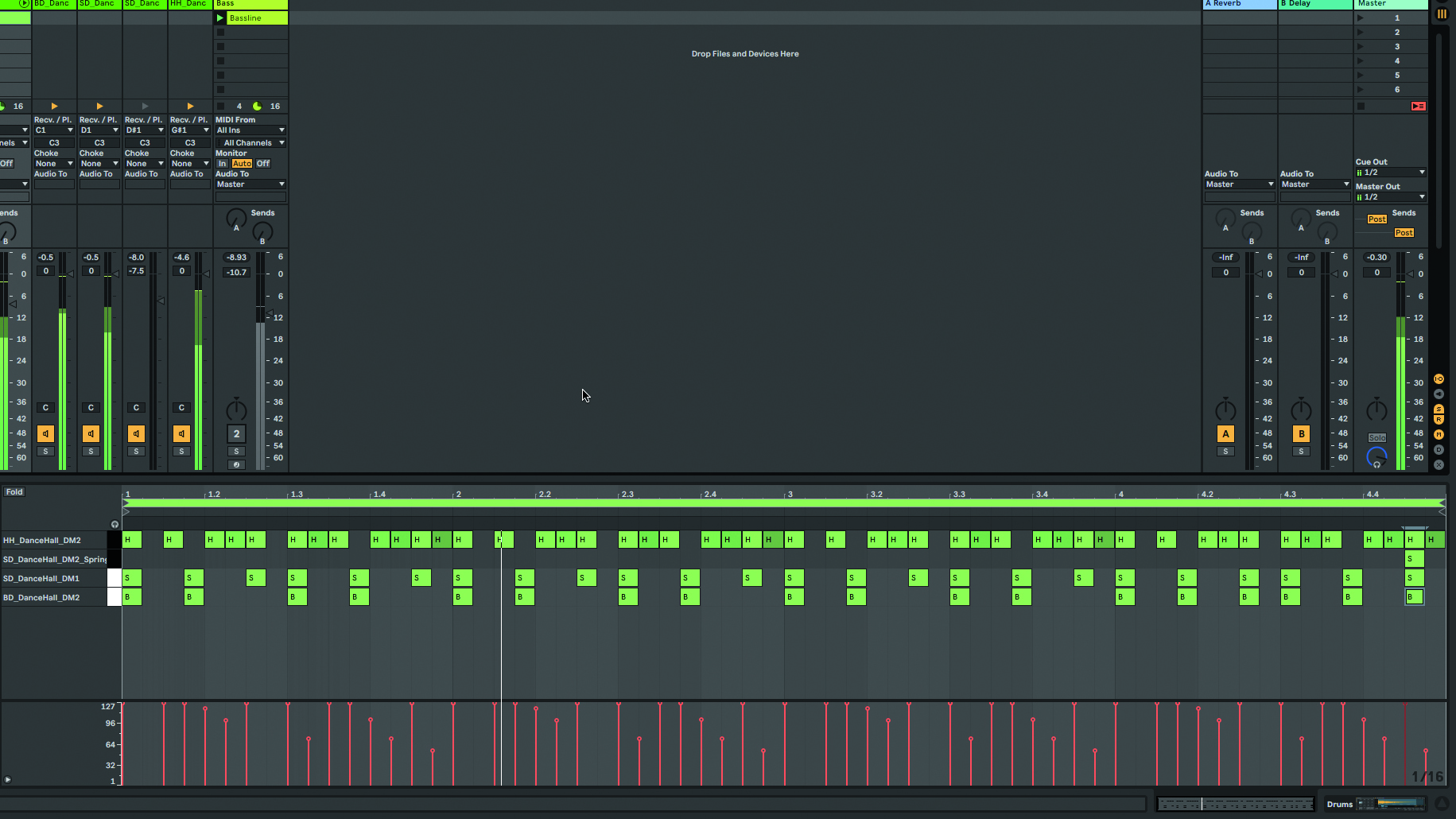
Step 5: Sitting between the last two patterns, this one simply stacks the kick and snare on the dotted eighths, with the snare alone on the following regular eighth. The result is a hard, stepping feel with more complex hi-hat sequence on top. Stacking both drums on all six hits of the fourth bar accents the phrase’s end.
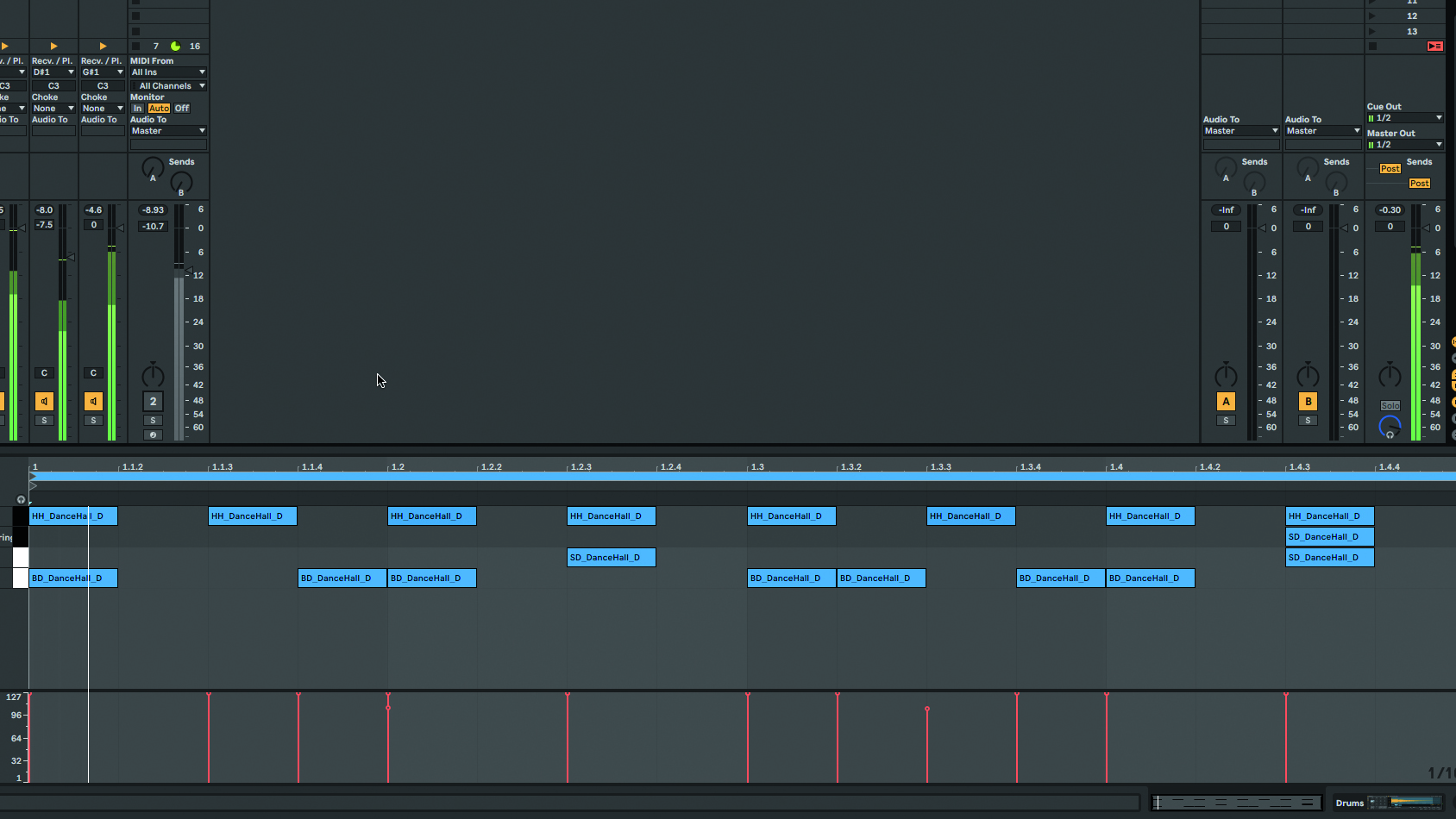
Step 6: While those dotted eighths are idiomatic, there are, of course, no rules when it comes to what you do with the notes in between them, and plenty of variations on the generic theme can be readily conjured up. Here are a couple featuring embellished kick drum lines, for example.
Computer Music magazine is the world’s best selling publication dedicated solely to making great music with your Mac or PC computer. Each issue it brings its lucky readers the best in cutting-edge tutorials, need-to-know, expert software reviews and even all the tools you actually need to make great music today, courtesy of our legendary CM Plugin Suite.
"If I wasn't recording albums every month, multiple albums, and I wasn't playing on everyone's songs, I wouldn't need any of this”: Travis Barker reveals his production tricks and gear in a new studio tour
“My management and agent have always tried to cover my back on the road”: Neil Young just axed premium gig tickets following advice from The Cure’s Robert Smith










